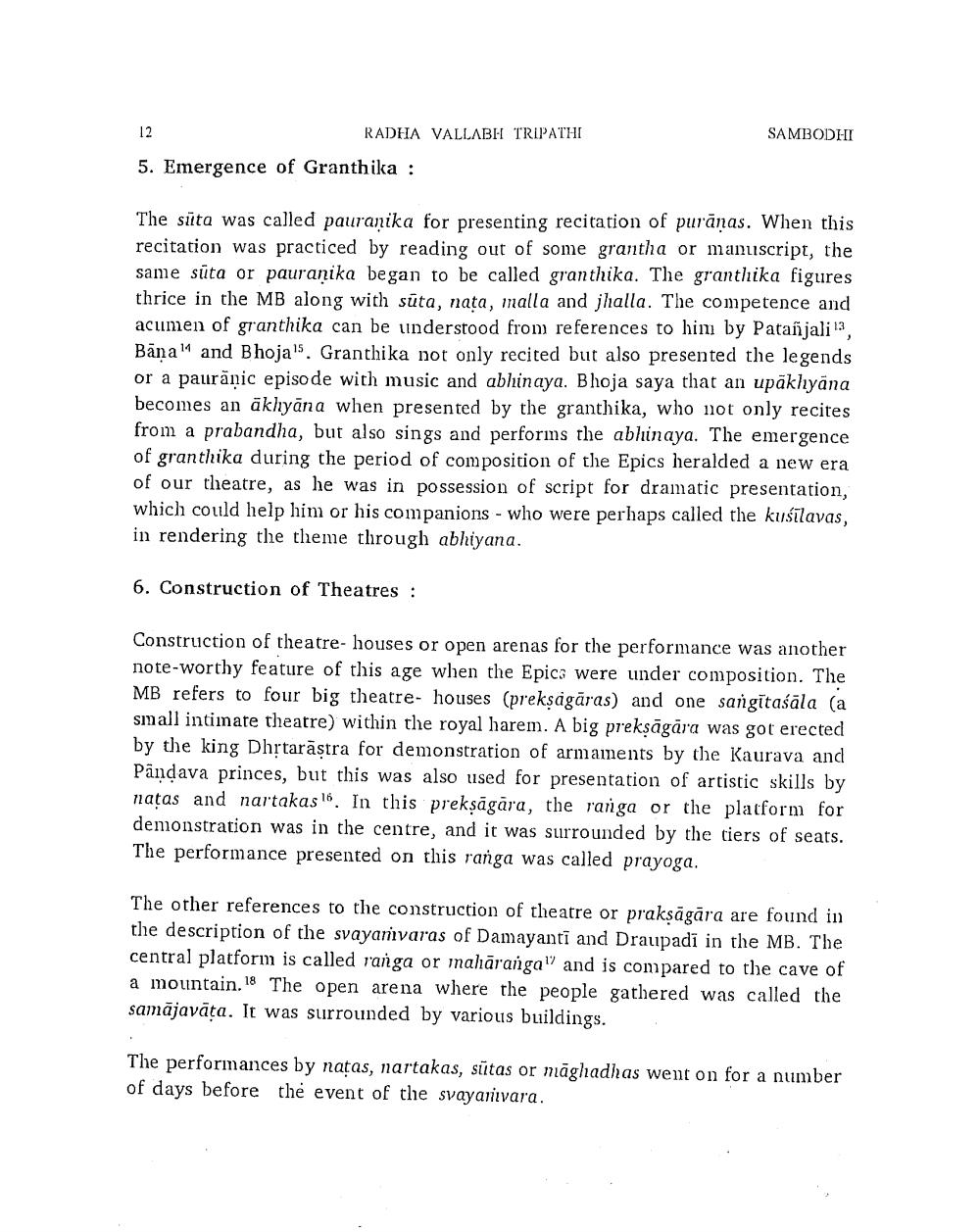________________
12
RADHA VALLABH TRIPATHI
5. Emergence of Granthika :
SAMBODHI
The sita was called pauranika for presenting recitation of puranas. When this recitation was practiced by reading out of some grantha or manuscript, the same sūta or pauranika began to be called granthika. The granthika figures thrice in the MB along with suta, nata, malla and jhalla. The competence and acumen of granthika can be understood from references to him by Patanjali, Bana and Bhoja. Granthika not only recited but also presented the legends. or a pauränic episode with music and abhinaya. Bhoja saya that an upåklyäna becomes an akhyāna when presented by the granthika, who not only recites from a prabandha, but also sings and performs the abhinaya. The emergence of granthika during the period of composition of the Epics heralded a new era of our theatre, as he was in possession of script for dramatic presentation, which could help him or his companions who were perhaps called the kusilavas, in rendering the theme through abhiyana.
6. Construction of Theatres :
Construction of theatre- houses or open arenas for the performance was another note-worthy feature of this age when the Epics were under composition. The MB refers to four big theatre- houses (prekṣägāras) and one sangitaśāla (a small intimate theatre) within the royal harem. A big prekṣāgāra was got erected by the king Dhṛtarästra for demonstration of armaments by the Kaurava and Pandava princes, but this was also used for presentation of artistic skills by natas and nartakas". In this prekṣägära, the ranga or the platform for demonstration was in the centre, and it was surrounded by the tiers of seats. The performance presented on this ranga was called prayoga.
The other references to the construction of theatre or prakṣägära are found in the description of the svayamvaras of Damayanti and Draupadi in the MB. The central platform is called ranga or mahāranga" and is compared to the cave of a mountain. 18 The open arena where the people gathered was called the samajavata. It was surrounded by various buildings.
The performances by natas, nartakas, sitas or maghadhas went on for a number of days before the event of the svayanivara.




